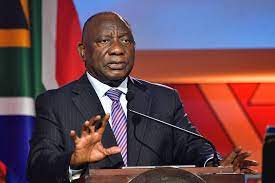South Africa’s plan to spend more on new capital projects has dropped sharply in the first half of 2025, as both the government and state-owned companies failed to introduce fresh infrastructure proposals. According to a recent report by Nedbank Group Ltd., only the private sector contributed to new investment, bringing the total value of newly announced projects down to $17.5 billion, compared to $32.7 billion recorded during the same period last year.
The new figure is an annualised estimate, meaning it is based on how much would be invested over a full year if the current trend continues. Nedbank’s data revealed that almost 63 percent of the investment recorded this year came from energy-related projects, showing a rising focus on electricity and renewable energy sources. Projects like Earth & Wire’s EnergyFields facility, as well as the Overberg and Ishwati Emoyeni wind farms, were among the key developments listed.
The report stressed that most of the recent private investment is being driven by structural changes within the country, especially the urgent need for energy security. The shift towards renewable energy sources is also becoming a major factor in business decisions, the report stated.
“This increase in private sector activity reflects the shift towards cleaner energy and the importance of energy stability in investment planning,” the bank said.
South Africa, which is considered the largest economy in Africa, has been battling with poor infrastructure for many years. Observers say that weak government investment and mismanagement have led to serious backlogs in infrastructure, which have negatively affected economic growth.
President Cyril Ramaphosa had earlier estimated that the country would require at least $88.5 million in public sector spending and about $177.1 million from the private sector to meet infrastructure needs by the year 2030. However, progress has been slow. The country’s National Treasury recently announced that $57 million has been set aside over the next three years for public infrastructure projects. Government hopes this fund will also encourage private sector partners to invest more.
Despite the lack of new government projects, the private sector is stepping up. According to Nedbank, this year’s investment from private companies is the highest since 2008. But that is not enough to drive full recovery. The report predicts that Gross Fixed Capital Formation (GFCF), a measure of how much a country is investing in new assets like buildings and infrastructure, will still decline by 1.5 percent in 2025. GFCF had already dropped last year, and the outlook for the next three years remains weak, with projected growth of just 2.2 percent per year, which is below average for a country of South Africa’s size.
Nedbank explained that even though there have been a few improvements, the overall environment for long-term investment remains difficult. Some of the major problems include rising public debt, weaker demand for exports, low commodity prices, and external issues such as U.S. tariffs on African goods.
Analysts say unless the government increases its infrastructure spending and encourages more public-private partnerships, South Africa may struggle to meet its 2030 targets. Infrastructure development is critical for sectors like transport, manufacturing, agriculture, and telecommunications, which all need better roads, power supply, and logistics networks to grow.
The first half of 2025 has shown that the private sector is willing to invest, especially in energy, but observers say the government must play a stronger role. Without new public projects, job creation, service delivery, and industrial growth may continue to suffer.
South Africa’s economy is still trying to recover from the impact of COVID-19, power shortages, and rising inflation, and experts believe that capital investment is one of the most important tools for sustainable development. But for now, signs suggest that government support is still lacking.
